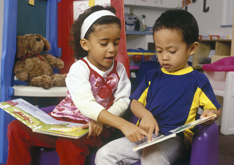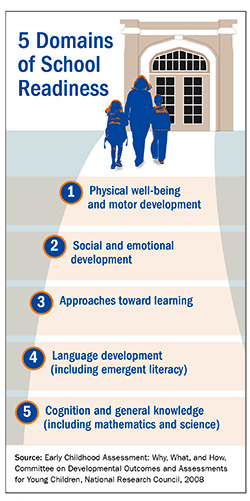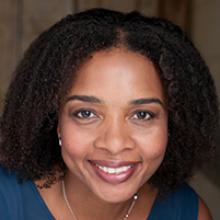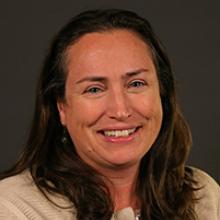What to Look for in a High Quality Preschool
 President Obama has set a goal to enroll six million children in preschool by 2020. Members of Congress have introduced the Strong Start for America’s Children Act to fund early education for four-year-olds. While increasing access is an important first step, researchers also emphasize the importance of quality. Early childhood education experts at the American Institutes for Research talk about what questions everyone—from parents to policymakers—should ask when looking at a preschool.
President Obama has set a goal to enroll six million children in preschool by 2020. Members of Congress have introduced the Strong Start for America’s Children Act to fund early education for four-year-olds. While increasing access is an important first step, researchers also emphasize the importance of quality. Early childhood education experts at the American Institutes for Research talk about what questions everyone—from parents to policymakers—should ask when looking at a preschool.
Related Reading: Susan Muenchow explores Three Important Questions about Publicly Funded Preschools in an AIR Education Policy Center blog
What background do teachers have?
“When people talk about what credentials a preschool teacher needs, they typically go to one of two extremes,” says principal research scientist Susan Muenchow. “One extreme is, ‘Teachers should have the same training as K-12 teachers because their primary responsibility is to help children earn good grades.’ The other extreme is, ‘Teaching preschool is no different from babysitting.’ Both extremes oversimplify the responsibilities of a preschool teacher.”

Susan Muenchow
Muenchow says the model preschool programs, especially the ones that show dramatic results in improving educational and life outcomes of disadvantaged children, typically feature teachers with a bachelor’s degree. But she also points to some recent studies of state-funded programs that find no clear difference between programs that employ those with a bachelor’s or those with an associate’s.
That’s because preschool teachers working with 3- and 4-year-old children require a special set of skills, even more than teachers working with older children, she says. Teachers need to relate well with very young children who are rapidly changing across multiple domains of child development, and know how to embed play with learning. In order to do that, teachers need to understand child development and know what children are like as they grow from infants to preschoolers.
 Muenchow recommends looking for a teacher who has a background in child development and previous work experience with preschool-aged children because having such knowledge and skills could make a difference in the trajectory of a child’s life. “A teacher should know when children should be referred for help if they need special attention,” Muenchow says. “If those disabilities are checked early, there’s a better chance the child could be helped in time to enter school at a typical age and do well.”
Muenchow recommends looking for a teacher who has a background in child development and previous work experience with preschool-aged children because having such knowledge and skills could make a difference in the trajectory of a child’s life. “A teacher should know when children should be referred for help if they need special attention,” Muenchow says. “If those disabilities are checked early, there’s a better chance the child could be helped in time to enter school at a typical age and do well.”
Teachers should continue to learn even after earning a degree. Look for a program that has in place ongoing professional development to support and enhance teachers. Training should cover curriculum, child development, assessment use, classroom interaction, classroom management and family engagement. Lastly, Muenchow says to be wary of preschools with high staff turnover—an indication that things may not be going well in that organization.
What does the curriculum look like?
There are many curriculum options for preschool programs, from off-the-shelf plans to those developed in-house. Whatever curriculum a preschool uses, it should be informed by evidence-based practices, says Eboni Howard, principal researcher and head of the Early Childhood Education group at AIR. “Learn about the research behind it. Ask for the curriculum’s name and a reference list. If it was created by the program, ask how it was developed.”
A comprehensive curriculum will cover the Five Domains of School Readiness. Howard says to be wary of curricula heavily focused on one domain. “The development of children is very complex,” she says. “Progress of a domain within a child can be both independent of and highly connected to other developmental domains.”
So if a curriculum puts more stock in the domain of language and literacy and less on social and emotional development, for example, children could miss out on skills that help them succeed in school. Take the ability to control oneself: “If a child has the ability to regulate their thinking, emotions and behavior to appropriately respond in the preschool classroom, that will feed into their ability to participate in activities that will help them learn how to read, expand vocabulary, do math problems and even learn music,” says Howard.
Having such social and emotional competencies also benefits a child later in life, says senior researcher Ann-Marie Faria. “We know that kids who exhibit this suite of skills—self-regulation, low aggression, an ability to manage problem behaviors—are more successful in school,” she says. “But they also have better life outcomes: lower incarceration rates, less anti-social behavior and more success at sustaining relationships. So, it’s important that we foster these abilities at a young age.” Large-scale studies such as the Perry Preschool and Abecedarian projects, as well as numerous research articles, continue to document the relationship between high quality early education and later life success.
The experts also note that the curriculum should have activities that scaffold or build upon each other.
What is the quality of classroom interactions?
Studies show a correlation between the quality of classroom interactions—both teacher-child and child-child—and outcomes later in life. The quality of interaction can enhance and support the positive development of young children across all Five Domains of School Readiness.

Ann-Marie Faria
Faria, who has studied peer interactions and how they relate to a child’s cognitive and academic outcomes, says children who exhibit higher prosocial behaviors and lower aggression with peers have better school readiness. “We know that peer interactions in the classroom matter. In one study, I found that young boys in Head Start with lower physical aggression with their peers—fighting, kicking, et cetera—also had higher school readiness at the end of the school year,” she says.
How teachers provide instruction also matters to a child’s growth, says principal researcher Gabriele Fain. Research shows high quality teacher-child interactions is a strong predictor of higher social competence and lower levels of behavior problems. In addition, findings suggest the quality of instruction is positively related to language, math and reading skills.
When visiting preschools, Fain suggests observing how teachers work with children. How do teachers respond to children’s questions? Do teachers encourage children to talk and explain their thinking? Do they ask children questions beyond those that require a “yes” or “no” response? Are the teachers considering the child’s perspective?
To illustrate, Fain shares an example of what a conversation between children and teachers might look like: “If a child says, ‘I think it’s going to rain,’ the teacher might ask, ‘How do you know it’s going to rain?’ and encourage them to look for signs, such as ‘it’s cloudy outside.’ A simple back-and-forth like this prompts children to explain their thinking.”
How are student assessments being used?
Eboni Howard says she’s had conversations with parents who panicked at the thought of their children being assessed in preschool. “There’s a school of thought that young children should not be assessed because those results can lead to negative consequences,” she says.

Eboni Howard
These fears stem from a history of assessments being used in a way that have at best, been no help—or at worst—been detrimental to a child. Howard says programs should use assessment data to inform or improve classroom instruction or to provide the child with additional developmental supports.
One type of assessment application is screening, to identify if a child has unique developmental needs and could receive special education services. “A good preschool should have special education experts come in for children who need those services,” Howard says. Children could also be screened for delays in language, motor skills and cognition.
Another useful application is formative assessment, documenting individual learning and knowledge to identify a child’s strengths and weaknesses to inform instructional approaches. “You’d want a preschool program that uses an assessment to address any developmental needs early on and also to help teachers improve their own instructional approaches,” Howard says.
Does the program work with parents and family members?

Heather Quick
More preschools are involving parents in their child’s learning and development, or what is known in the field as family engagement. “Good programs recognize that parents are a child’s first and most important teacher, and support parents in this role,” says Heather Quick, a principal research scientist. “Research has shown that parents’ active engagement in their children’s early learning supports children’s school readiness and academic achievement.”
Quick led studies looking at long-term outcomes for children in family literacy programs in Los Angeles. Children whose parents received intensive parental participation training had better school attendance rates and higher English/language arts and mathematics scores on state exams than their peers whose parents did not have this training. “Preschools should provide learning opportunities for parents to help them understand how to support their child’s learning at home,” she says.
Deborah Parrish, an early childhood expert, says “On a very basic level, programs should at least allow parents to drop in at their child’s preschool program at any time. When a preschool is welcoming, it’s a promising sign.”

Deborah Parrish
Parrish says an engaged preschool should have a physical space for parents to convene, with a library featuring reading materials in all appropriate languages. Also look for opportunities for parents to be meaningfully involved, such as serving on advisory boards or participating as aides in the classroom.
“It’s also worthwhile to see if staff received specialized training in family engagement,” says Parrish. “Teachers and support staff may not be comfortable with or do not know how to work with parents. Preschools should be a place where parents are encouraged to understand their children’s developmental needs and the types of home-based activities that support their children’s learning and development. Staff should understand how to effectively communicate with parents so this happens naturally.”



